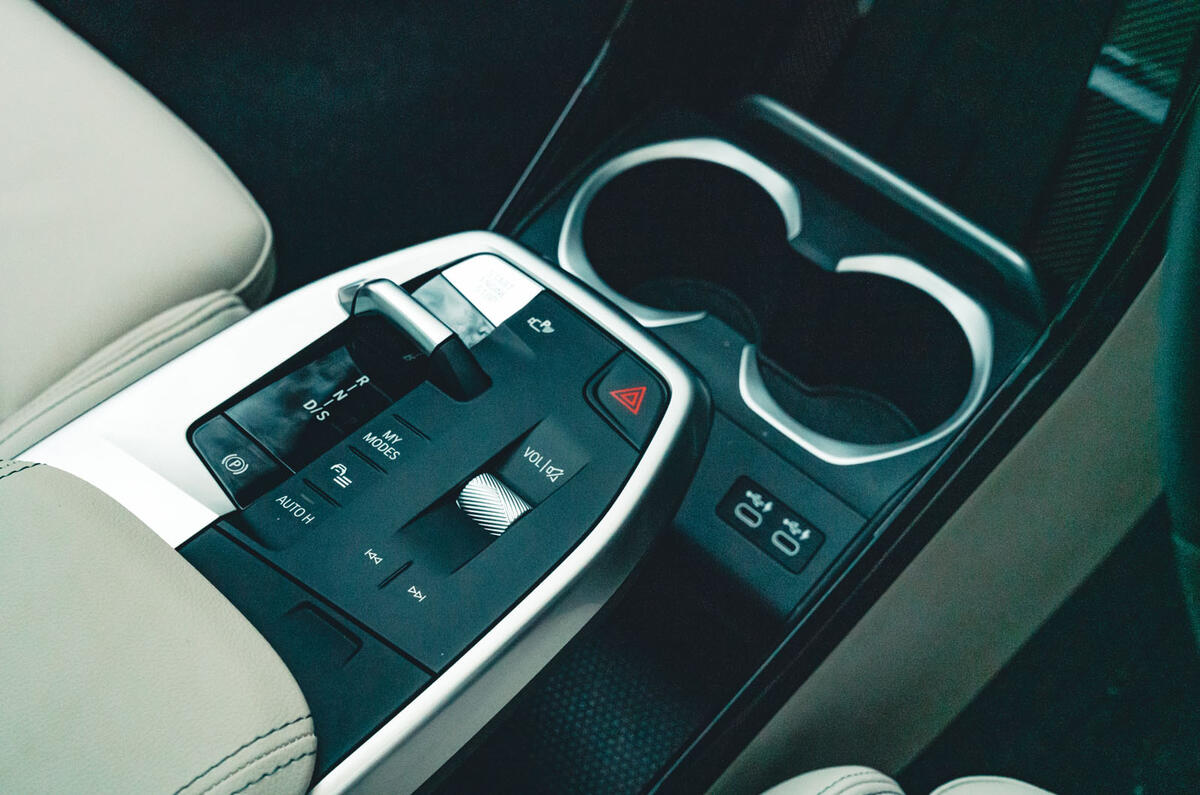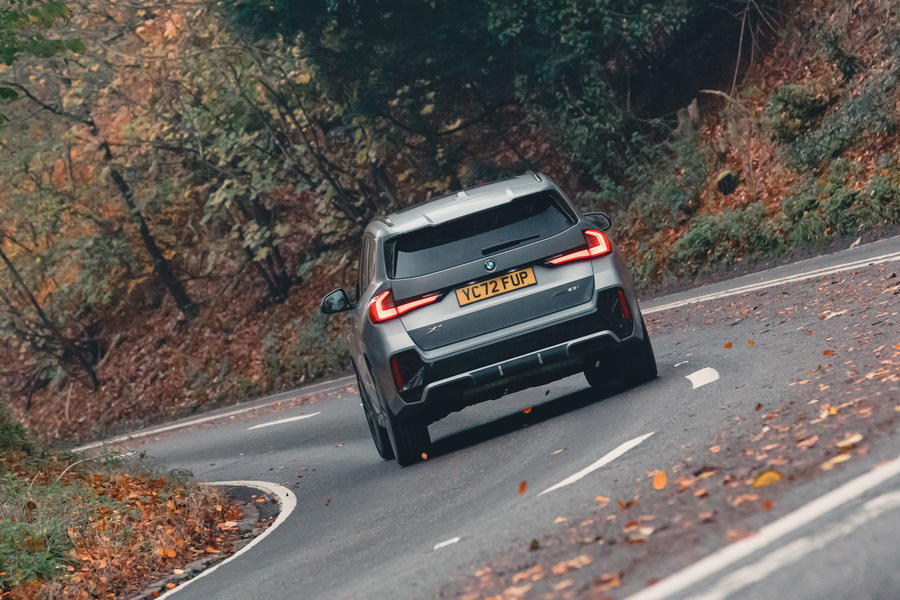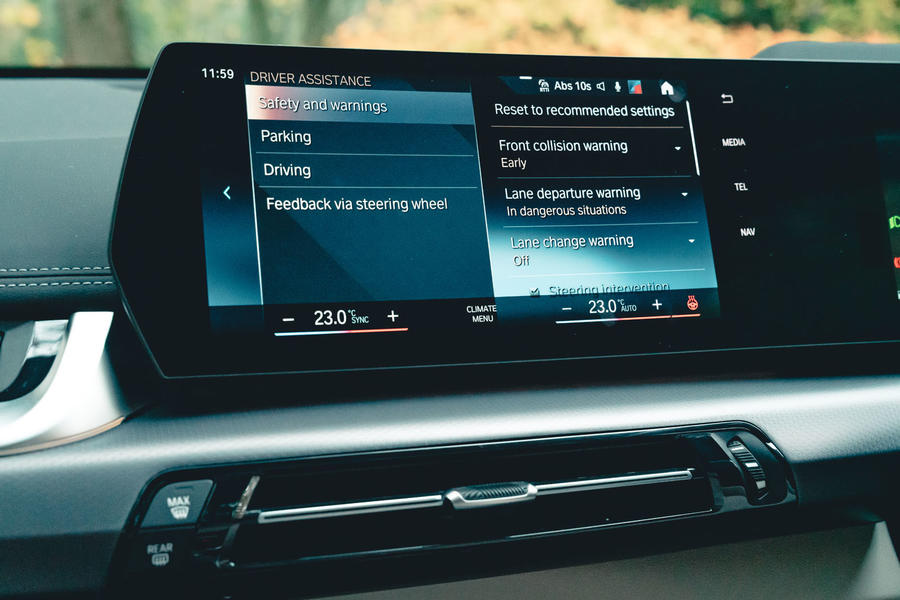If BMW being able to engineer a good engine and gearbox is no longer a certainty that you can count on, you might hope that the chassis engineers haven’t forgotten their craft. The X1 may not be natively rear-wheel drive, but that needn’t be a barrier to a fine-handling car.
Our test car was an M Sport model, like most BMWs in the UK, which brings bigger wheels and lowered suspension. It also had the adaptive M Sport dampers and the huge, 20in wheels. Although firm, the suspension deals with bigger lumps and bumps without being deflected, while also keeping the body level.
Even though the latest evolution of the Continental EcoContact tyres provides decent grip, at everyday speeds the steering’s initial response suggests otherwise. Push through with more steering angle and commitment, and the car will turn in fine. The steering will even weight up very subtly to tell you what’s going on.
Get on the power hard out of a bend and you can feel enough power being sent to the rear to cancel out any understeer. Equally, a mid-corner lift of the throttle will neatly tuck in the nose. That’s all very well, but it’s odd for a family crossover that you have to drive it quite hard to get any sense of fun or engagement out of it. It ought to deliver more tactility through the controls at ordinary speeds.
That culminated in how well the X1 took to the Millbrook Hill Route. The stability control is generally smooth and unintrusive, and with the system in one of the sport modes (it won’t ever turn fully off), the X1 will even show a playful side. The steering comes alive, too.



















































